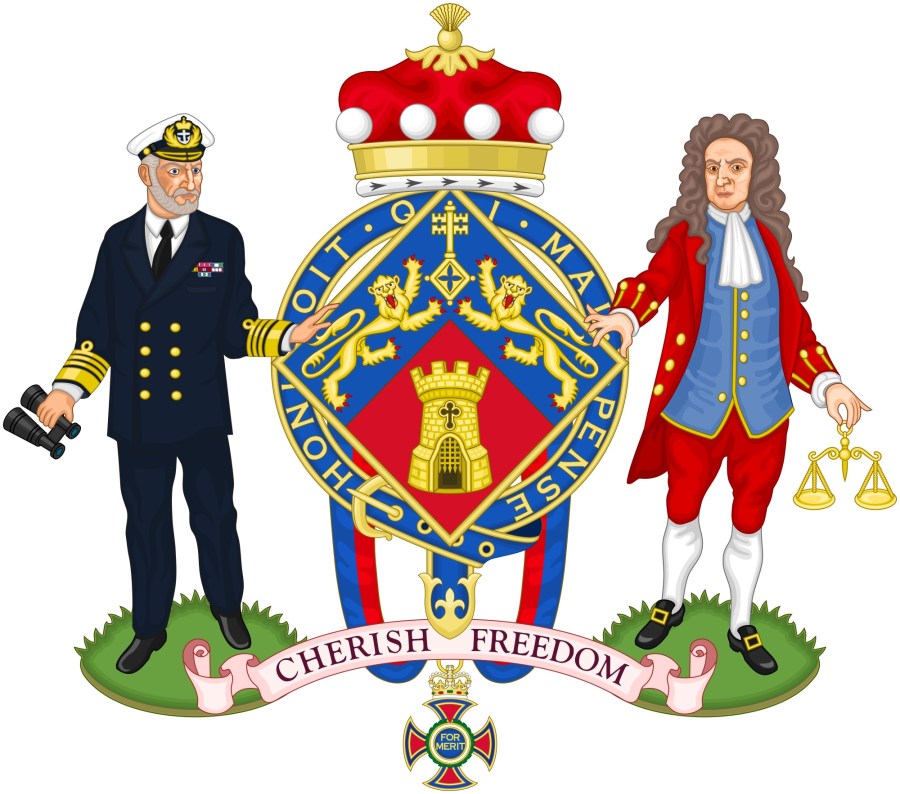Originally Published on the 15th of April 2013 on Flickr, where it had 1539 views. Republished today on the occasion of a London EXHIBITION 1–26 October 2019 Curtains for Mrs Thatcher by the gallery on the move England & Co at the Sotheran Building 2 Sackville Street, London W1
For the controversy of the 1982 sinking of the Argentinian cruiser General Belgrano during the Falkland War in which 323 people died (mainly young navy sailors) see the web-site The Belgrano Inquiry which lets come to voice multiple interpretations of this drama.
belgranoinquiry.com/
I take that drama for its own merits and as well as a metaphor for “Thatcher Rule” where her idea of “cherishing of freedom” (the motto of the coat of arms of Baroness Thatcher (1995–2013) (*) lead to an impoverishing deregulation for many and the enrichment of only a few.
On the same day in 2013 I also published this panorama of Margaret Thatcher and meetings with some of her famous and important friends over the years…

Left/right/topdown: Deng Xiao Ping, China; Norodom Sihanouk, Cambodia; Nicolae Ceaușescu Rumania; Augusto Pionochet, Chile; Josep Broz Tito, Yugoslavia; Henri Kissinger, USA; Ronald Reagan, USA; Robert Mugabe, Zimbabwe; Jimmy Saville, UK — middle row is her Conservative Party claque applauding Thatcher on October 13, 1989 at the end of the Conservative Party conference in Blackpool
—
(*) “cherishing freedom”
Coat of arms of Margaret Thatcher, The Baroness Thatcher (1925-2013), Prime Minister of the United Kingdom from 1979 to 1990. This achievement was used from 1995 to 2013, granted originally by the College of Arms in 1992 and was designed by the Garter King of Arms Sir Colin Cole. This version displays the circlet of the Order of the Garter to which she was appointed to only in 1995. “ On a lozenge circumscribed by the Garter and the Ribbon of the Order of Merit with Cross pendant therefrom, surmounted by a baron’s coronet, per chevron azure and gules, a double key in chief between two lions combatant a tower with portcullis in base all or, with supporters: dexter: An admiral of the British Navy; sinister: Sir Isaac Newton holding in his left hand weighing scales, both proper. Her motto was: “CHERISH FREEDOM” ” The dexter supporter is an Admiral of the Royal Navy, to commemorate the victory of the Falklands War during her premiership. The sinister supporter is Sir Isaac Newton, to recognise her earlier career as a scientist. The key and the two royal lions of England represents her tenure as Prime Minister and First Lord of the Treasury. The tower and portcullis represents her time at the Palace of Westminster as Member of Parliament. She bears this achievement on a lozenge (as is traditional for a woman), surrounded by the circlet of the Order of the Garter (in which she was appointed in 1995), below hangs the ribbon and insignia of the Order of Merit (in which she was appointed in 1990). Date 10 April 2013, 22:56:16 Source Own work, Based on the heraldic blazon and other works



